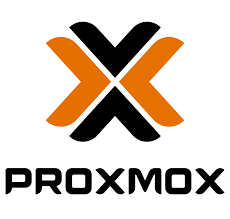Proxmox Error 500 “can’t activate storage” typically means a problem with the storage device’s connection or access. Today, we’ll see the steps we must take in order to fix the issue quickly and easily. As part of our Proxmox Support, Bobcares provides answers to all of your questions.
Overview
- Understanding Proxmox Error 500 “can’t activate storage”
- Common Causes
- Troubleshooting Steps
- Main Considerations
- Conclusion
Understanding Proxmox Error 500 “can’t activate storage”
The general server-side error “Error 500: Can’t Activate Storage” in Proxmox signifies that there is a problem Proxmox VE (Virtual Environment) platform faces when attempting to access or activate a specific storage resource. This issue may have many different root causes, thus it’s important to know the overall context in which it appears. Proxmox’s “Error 500: Can’t Activate Storage” usually denotes an issue with access rights or storage settings. This error happens when one of the resources or storage devices that Proxmox has defined in its configuration cannot be accessed or enabled.

Common Causes
1. Incorrect Storage Configuration: The storage might be incorrectly configured in the Proxmox interface. This includes wrong paths, incorrect storage type (e.g., NFS, iSCSI, Ceph), or misconfigured storage options.
2.Storage Unavailability: The storage resource (e.g., NFS share, iSCSI target, Ceph cluster) may be temporarily unavailable, offline, or experiencing connectivity issues.
3. Permission Issues: Proxmox might not have the required permissions to access the storage resource. This can occur due to incorrect file permissions or network restrictions.
4. Network Issues: If the storage is network-attached (e.g., NFS, iSCSI), network issues like misconfigured firewall rules, incorrect network setup, or dropped connections can prevent Proxmox from accessing it.
5. Corrupt or Missing Storage Files: The storage definition files in Proxmox’s configuration might be corrupted or missing, leading to this error.
Troubleshooting Steps
1. Check Storage Configuration:
i. Go to Datacenter > Storage in the Proxmox web interface.
ii. Verify the settings for the storage that’s throwing the error. Ensure the correct path or network location is specified.
iii. If the storage is NFS or iSCSI, check that the server address and export paths are correctly entered.
2. Check Storage Availability:
i. For Network Storage (NFS/iSCSI): Ensure that the storage server is online and reachable from the Proxmox node. We can also use tools like ping or telnet to verify connectivity from Proxmox to the storage server.
ii. For Local Storage: Ensure that the local disk or LVM group is properly attached and available on the node. Also, use commands like lsblk, df -h, or vgs to check if the storage is recognized by the operating system.
3. Check Permissions:
i. For NFS Storage: Verify that the NFS server is exporting the share with the correct permissions, allowing the Proxmox node’s IP to access it. And check and match the UID/GID if necessary.
ii. For Local Storage: Ensure that the Proxmox service has the necessary permissions to access the storage path.Then, correct the permissions using chmod and chown if necessary.
4. Review Logs for Detailed Errors:
i. Check Proxmox logs for more specific error messages.
ii. The main logs to review are /var/log/syslog, /var/log/pve/tasks/, and /var/log/pveproxy/.
iii. Use the journalctl command in order to check the system logs for any errors related to storage.
5. Restart Services:
i. Sometimes, simply restarting the Proxmox services or even the Proxmox node can resolve temporary glitches.
ii. Use the following command to restart relevant services:
systemctl restart pvedaemon pveproxy pvestatd
6. Check for Updates:
Ensure the Proxmox installation is up-to-date, as storage-related bugs might have been fixed in newer releases. We can update Proxmox using the following code:
apt-get update && apt-get dist-upgrade
7. Manual Activation:
If the storage is not being activated automatically, try to manually activate it using the CLI. For example, if it’s an LVM storage:
vgchange -ay
For Ceph, we may need to check the Ceph status and ensure proper integration of the storage.
Main Considerations
1. When we are using a Proxmox cluster, ensure that all nodes can access the storage resource and that there is no network partition or configuration mismatch between nodes.
2. If the storage configuration file in /etc/pve/storage.cfg has issues, we may also need to correct it manually by editing the file.
3. Check Storage Type Compatibility: Ensure that Proxmox supports the storage type we are trying to use. Also, it’s setup is correct.
[Want to learn more? Click here to reach us.]
Conclusion
In conclusion, the “Error 500: Can’t Activate Storage” in Proxmox is often a result of misconfigurations, network issues, or permission problems related to the storage setup. By systematically checking the storage configuration, ensuring network connectivity, verifying permissions, and reviewing logs, we can identify and resolve the root cause of the issue.
Regularly updating the Proxmox environment and maintaining proper storage practices will help prevent such errors in the future. If the problem persists, our Support team assist you with further assistance.







0 Comments